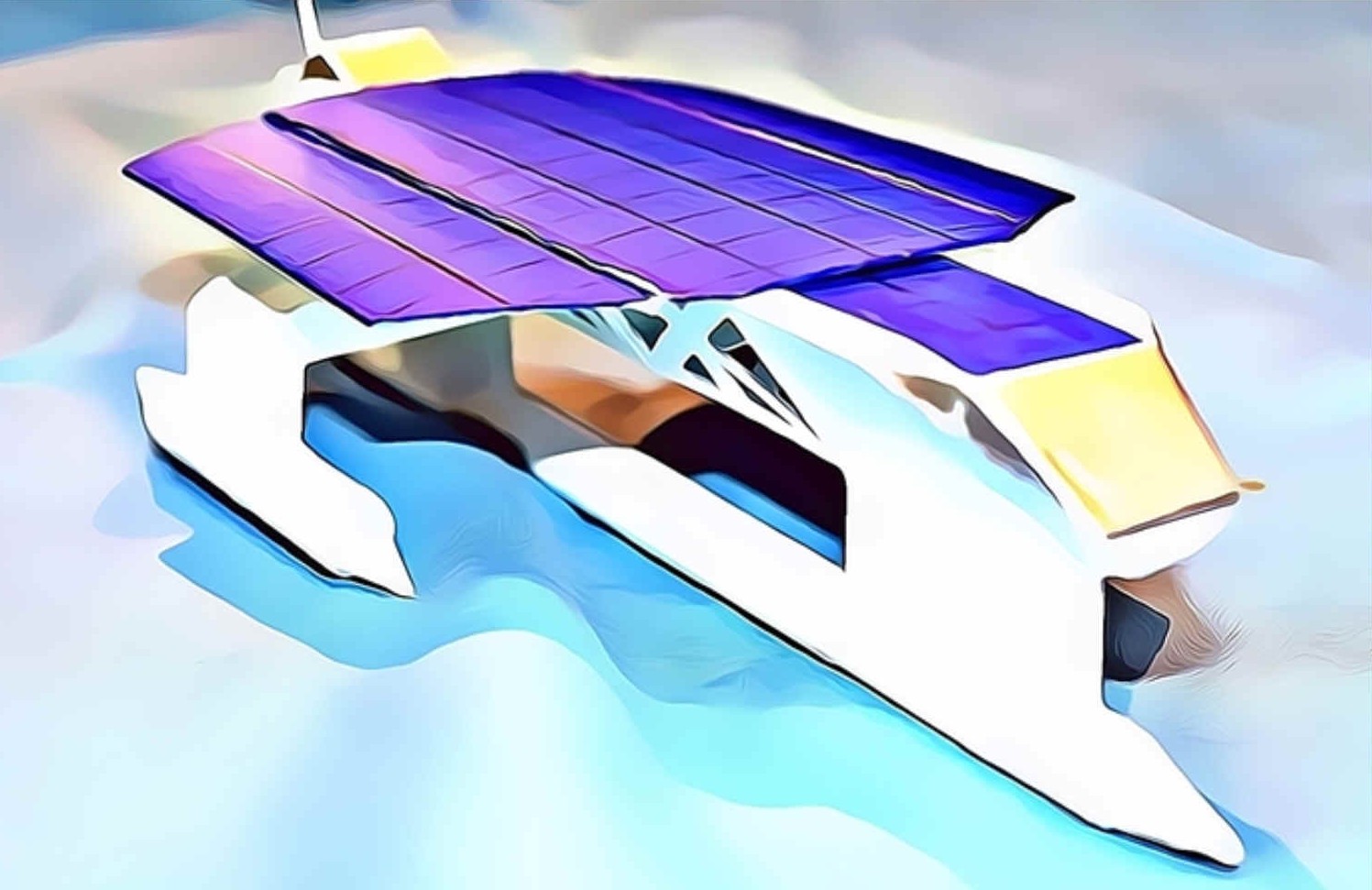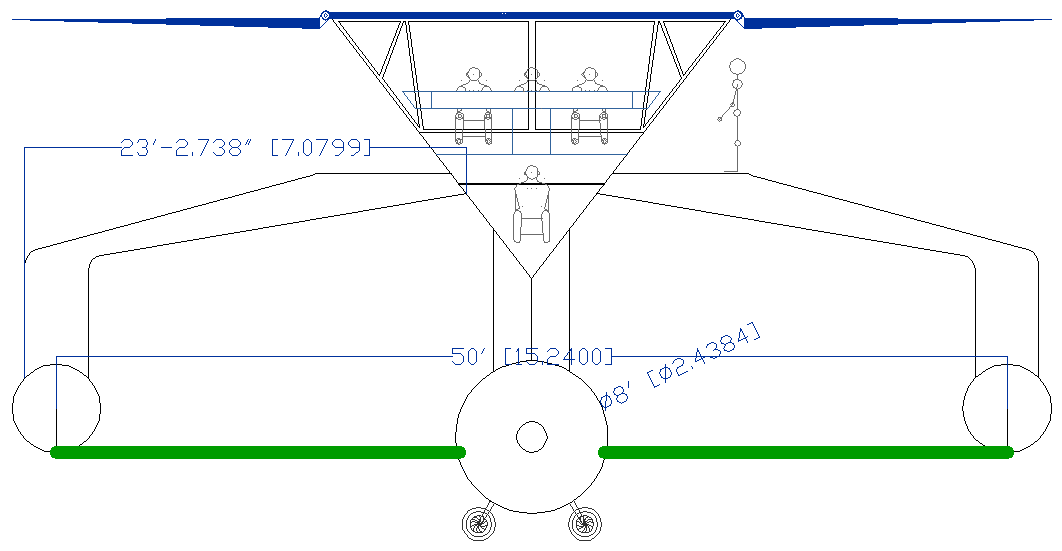|
SUPERSTRUCTURE
Please use our A-Z INDEX to navigate this site or return HOME
|
SWATH - It all started with this tiny model, made of paper and cardboard. It floated perfectly as a submerged central hull, with outriggers just skimming the water surface, to provide stability.
In the years that followed a swing wing system and wind turbine boom were developed on a land vehicle. The idea is to combine a rotary sail generator with solar panels to allow faster blue water transits, allied to advanced computer navigation for green lanes.
Most ships have a hull into and onto which, engines, crew and cargo space are fitted, with no thought for harvesting energy from nature. Whereas the sailing ships of old were designed to carry as much sail area as they could. Hence, the Swann is more aligned with the tall ships, than the bunker fuelled smoke belchers of today.
If we are to beat the present water speed record for solar powered vessels, we need to improve on the power to weight ratio and the energy harvesting capacity in relation to solar panel area. How do we do that?
Well, just like the tall sailing ships, we start with the solar panels and wind turbine, working our way back to the water, via an efficient hull.
Space frames are much lighter than unitary designs such as the GRP (boats) or steel hulls of large ships. By going for a tubular superstructure made of lighter than steel, aluminium, we do not need a mold (saving cost over carbon fiber), though composites are potentially lighter, and we will be investigating such use for the solar wings.
The tubular frame joins front and rear cabins, allowing us to mount our solar wings in such a way as to be able to track the sun. Likewise, the wind turbine is attached to the rear of the art cabin, bolting to a tubular framework.
1. A single central submerged hull stabilized by outriggers - or Small Waterplane Area Triple Hull (SWATH).
2. A single central wave piercing hull stabilized by outriggers as a trimaran.
WAVE PIERCING HULL - In this CAD drawing we see the superstructure closer to sea level. The space-frame is a triangle, the most basic , simplest and therefore lightest, engineering design. The simple cylindrical hull design may be revised to further reduce air and water drag. The outrigger sponsons are ride height adjustable with a proprietary drag reducing system (not shown). Copyright diagrams © Cleaner Ocean Foundation Ltd, January 2021.
HULL & SUPERSTRUCTURE - The trimaran design in plan view without solar panels or wings. The hull can be built as 12 sub-assemblies. Such that the alloy fabrications can be outsourced and assembled at any suitable site for launch. The largest sub-assembly would be the central triangulated spaceframe @ 16 meters. Fore and aft cabins are 10 meters long. All suitable for road haulage.
FAITHFUL REPLICA - You can see from the 1:200 model, that the CAD version of the proposed design closely resembles the original concept.
Both of the proposed hull designs share the same:
a) Ultra light superstructure purposed designed to harvest energy from nature via b) and c) below,
b) Solar wings that track the sun and fold for storms, in concert with
c) A turbine generator on a mast that tracks wind conditions and furls for storms.
|
|
Please use our A-Z INDEX to navigate this site or return HOME
This website is Copyright © 2021 Jameson Hunter Ltd
|



